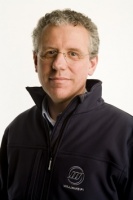Alex Burns, Williams F1 chief executive
Race to market: Williams F1’s chief executive is keen to exploit the wider commercial potential of motorsport advances. Stuart Nathan reports

The dress code for Formula 1 employees is fairly relaxed. If you’re trackside or in a car, you wear overalls. Otherwise, your team’s polo shirt is generally the order of the day. Alex Burns, chief executive of AT&T Williams F1, might well be the only member of staff who habitually wears a suit.
’The role of chief executive of an F1 team is a bit different from the role in most organisations,’ he said. ’I do run what you might call the “normal company” stuff at Williams, the support functions such as IT, HR and procurement. But I also have key line responsibilities for the production of the cars and for the maintenance and testing facilities that support them.’
In a way, Burns’s job is to allow the team’s technical staff, such as technical director Sam Michael, to concentrate on developing the cars and its business-oriented personnel, such as chairman Alan Parr, to look after the interests of the team sponsors. ’I don’t often get my hands dirty; I don’t lay up carbon fibre or run machine tools,’ Burns said. ’But I have a great job. I really enjoy the variety of it, especially because F1 tends to drive a lot of deep specialisation. Essentially we’re designing and manufacturing a car every year, and improving it throughout the season.
Register now to continue reading
Thanks for visiting The Engineer. You’ve now reached your monthly limit of premium content. Register for free to unlock unlimited access to all of our premium content, as well as the latest technology news, industry opinion and special reports.
Benefits of registering
-
In-depth insights and coverage of key emerging trends
-
Unrestricted access to special reports throughout the year
-
Daily technology news delivered straight to your inbox










Water Sector Talent Exodus Could Cripple The Sector
Maybe if things are essential for the running of a country and we want to pay a fair price we should be running these utilities on a not for profit...